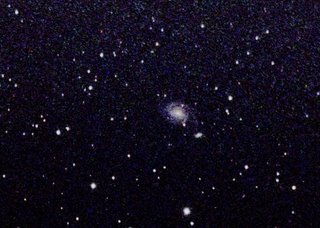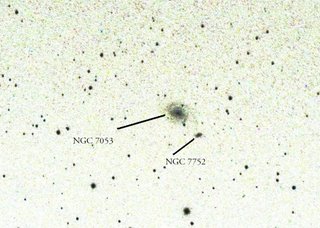Arp realized that the reason why galaxies formed into their usual shapes of spiral or elliptical patterns was not understood by astronomers. With this atlas, astronomers had a sample of peculiar galaxies that they could study in more detail. The atlas is not a complete overview of every peculiar galaxy in the sky and does not intend to be -- but it does provide examples of the different phenomena as observed in nearby galaxies.
Because little was known at the time of publication about the physical processes that caused the different shapes, the galaxies in the atlas are sorted based on their appearance.
Objects 1-102 are individual peculiar spiral galaxies or spiral galaxies that apparently have small companions.
Objects 102-145 are elliptical and elliptical-like galaxies.
Objects 146-268 are individual or groups of galaxies with neither elliptical nor spiral shapes.
Objects 269-327 are double galaxies.
Finally, objects that simply do not fit into any of the above categories are listed as objects 332-338.
Most objects are best known by their other NGC numbers, Messier numbers or other catalogue listing, but a few galaxies are best known by their Arp numbers, such as Arp 220.
There is better understanding today about the physical processes that lead to the peculiarities seen in the Arp atlas. A large number of the objects are interacting galaxies, including Arp 85, Arp 220, and Arp 244.
A few of the galaxies are simply dwarf galaxies that do not have enough mass to produce enough gravity to allow the galaxies to form any cohesive structure. NGC 1569 or Arp 210 is an example of this.
A few others are radio galaxies -- these contain active galactic nuclei that produce powerful jets of gas called radio jets. The atlas includes the nearby M87, or Arp 152, as one of these radio galaxies.
Here is a photo of Arp #86 I took this evening. More commonly called NGC 7753, this is a spiral galaxy with a small nucleus and a small bar. NGC 7752 is a close companion that is apparently attached to one of NGC 7753's spiral arms. It was first thought to be an elliptical galaxy, but later images show that it is an irregular and disrupted system with three major H-{alpha} areas. The pair seem to have recently collided and are very similar to the M51 galaxy pair.

This pair is included in Arp’s catalog of unusual galaxies as ARP 86. The system is in Arp's class "spiral galaxies with large high surface brightness companions on arms".
I inverted the colors on the photo -- an old astronomer's trick that brings out some of the hard-to-see details. The smaller galaxy is more easily seen in the inverted image.
Observation notes:
2006 September 16, 22 hours 52 minutes local time.
Sky -- excellent. 4.5 out of 5. Dark sky. No moon.
5 minute exposure on 3 megapixel CCD.
14 inch Schmidt Cassegrain Telescope with 3910mm focal length.
No comments:
Post a Comment